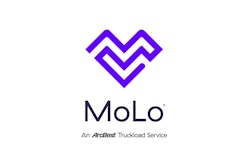
On Feb. 1, President Trump issued an announcement that the United States will be implementing a 25% additional tariff on imports from Canada and Mexico and a 10% additional tariff on imports from China to combat illegal immigration and drug trafficking. While the financial effects will be felt immediately by businesses importing from these countries, the long-term effects on our supply chain are yet to be determined.
Why "Made in America" is becoming a smart business move
“Made in America” is about to become more appealing than just a political statement, it’s set to become a financial advantage to both companies and consumers. As many smaller e-commerce businesses choose to source their raw materials and goods closer to home their supply chain strategy will need to be adjusted accordingly. Those companies that have used air and sea transportation in the past, will now need to look to the U.S. trucking market to move their materials and finished products around the country.
But many e-commerce businesses don’t need to move a full truckload of material or products at one time. They need a solution that is flexible, economical, and has the technology that delivers the same service level their customers have come to expect in this digital age. Luckily, the solution already exists.
LTL: A cost-effective solution for e-commerce brands
LTL shipping allows businesses to share truck space with other shippers, reducing costs compared to booking a full truckload. This makes it an ideal option for brands that don't have enough inventory or material to fill an entire truck but still need efficient and reliable transportation. By leveraging LTL, e-commerce businesses can optimize their supply chain, improve delivery times, and scale their operations without incurring unnecessary expenses.
The evolution of LTL: From legacy systems to digital innovation
The concept of LTL certainly isn’t new, but it’s a legacy business that has been struggling to reinvent itself in the new digital age. Some LTL carriers were pushed to their limits trying to absorb freight volume from bankrupted carriers; therefore a capacity crisis ensued leaving many smaller shippers in the lurch.
Today the LTL industry has mostly stabilized and other larger LTL carriers have corrected their capacity concerns. Out of the ashes comes a new type of LTL carrier born just as digitally native as the brands they seek to service. The issue with legacy LTL providers is that they were built in a time before e-commerce and multichannel shipping even existed. They struggle with a lack of visibility with limited tracking and inconsistent scan data that leave shippers in the dark on shipment status, excessive handling at terminals, rigid service options, and inflexible scheduling.
The future of LTL: What e-commerce businesses need to know
Reshoring offers a respite from tariffs, import duties, and geopolitical disruptions. It also opens the opportunity for a shorter logistics chain, shorter lead times, reduced shipping delays, and overall lower freight costs. It’s easy to fall into the trap of using a transportation provider who offers the cheapest option, but there is so much more that goes into choosing the right LTL carrier. Traditional carriers often struggle with outdated systems that lack visibility, flexibility, and efficiency. A digital-first network ensures real-time tracking, automated scheduling, and better communication between shippers and carriers.
Here’s what to look for when selecting an LTL carrier that is imbued with the digital infrastructure that modern brands need in their supply chain strategy:
1. Faster, more efficient routing
Conventional LTL shipping often involves multiple terminal stops, leading to increased handling, delays, and potential damage. An optimized network that minimizes transfers and maximizes direct routes improves speed and reliability, reducing overall transit times.
2. Real-time tracking and visibility
Limited tracking and inconsistent scan data leave shippers in the dark about their shipments. A modern LTL provider should offer real-time tracking and proactive updates, enabling businesses to monitor freight movement and provide accurate ETAs to customers. Transparency is critical for both B2B and DTC brands looking to meet customer expectations. A study by Deloitte showed that 83% of consumers consider shipment tracking crucial in making purchase decisions. To stay competitive, carriers must offer LTL freight tracking systems that provide real-time updates on the shipment's location and status, allowing all stakeholders to monitor progress and plan accordingly.
3. Flexible and transparent pricing
Many legacy LTL carriers use complex pricing structures with unexpected fees. A fair and transparent pricing model allows businesses to accurately forecast shipping costs and make informed logistics decisions. This prevents unnecessary expenses and ensures businesses can budget effectively.
4. Nationwide coverage with a scalable network
A strong LTL provider should offer widespread coverage while maintaining efficiency. The ability to scale and support businesses as they grow—without sacrificing service levels—ensures that e-commerce brands can expand their reach without logistical bottlenecks.
5. Sustainable and cost-effective freight solutions
Eco-friendly logistics solutions reduce environmental impact while optimizing costs. Sustainable practices such as route optimization, fewer handling points, and consolidation strategies lead to lower fuel consumption and emissions while maintaining cost efficiency.
As tariffs reshape global trade and supply chains, e-commerce businesses must rethink their logistics strategies to stay competitive. Reshoring and leveraging LTL shipping present a viable path forward, offering cost-effective, flexible, and technology-driven solutions that align with modern consumer expectations. By choosing an LTL provider that prioritizes real-time tracking, efficient routing, and transparent pricing, businesses can mitigate supply chain disruptions while improving operational efficiency.
The future of LTL is increasingly digital, with carriers adopting technology to enhance visibility, optimize routes, and provide seamless shipping experiences. E-commerce brands that embrace these innovations will not only navigate the challenges of today’s trade policies but also position themselves for long-term growth in an evolving marketplace. Now is the time for businesses to assess their logistics partners and ensure they are equipped for the future of shipping.



















